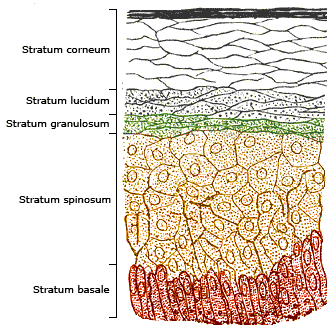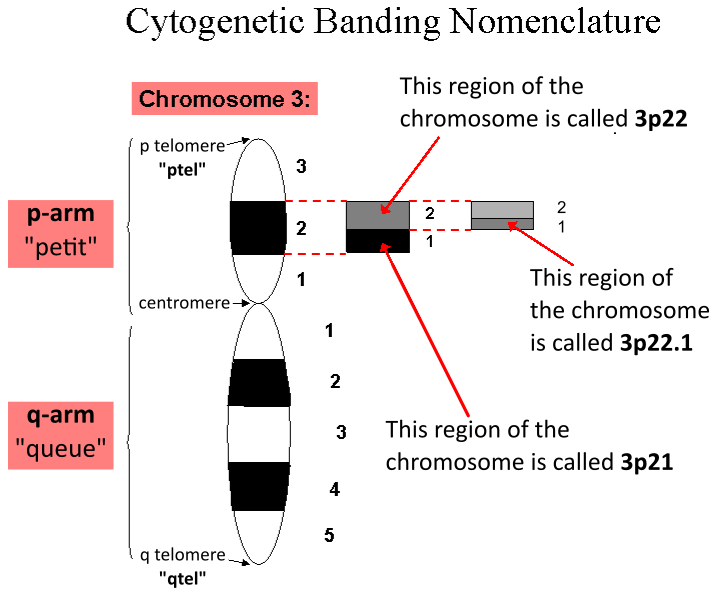|
RPTN
Repetin is an extracellular matrix protein expressed in the epidermis. In humans it is encoded by the ''RPTN'' gene. Repetin is part of the S100 fused-type protein family and contains an EF hand structural domain. It functions in the cornified cell envelope formation. It is a multifunctional epidermis, epidermal matrix protein. RPTN reversibly binds calcium. RPTN is 5,634 bases long. It starts 152,126,071 base pairs from Pter (locus), pter. It ends 152,131,704 base pairs from pter. It has a minus strand orientation. RPTN is one of the genes that differ between present-day humans and Neanderthals. RPTN helps protect skin cells, and since the Neanderthals were missing this protein, the Neanderthals were better adapted to the cold, but less so to disease. References {{Reflist S100 fused-type proteins ... [...More Info...] [...Related Items...] OR: [Wikipedia] [Google] [Baidu] |
S100 Fused-type Protein
The epidermal differentiation complex (EDC) is a gene complex comprising over fifty genes encoding proteins involved in the terminal Cellular differentiation, differentiation and cornification of keratinocytes, the primary cell type of the epidermis. In humans, the complex is located on a 1.9 Mega base pairs, Mbp stretch within chromosome 1q21. The proteins encoded by EDC genes are closely related in terms of function, and evolutionarily they belong to three distinct gene families: the cornified envelope precursor family, the S100 protein family and the S100 fused type protein (SFTP) family. It has been hypothesized that the clustering of EDC genes occurred due to gene duplication, duplication events which were evolutionarily favored during the adaptation to terrestrial environments. In Sirenia, sirenians, the main subtypes of EDC genes have been Conserved sequence, conserved or even duplicated, such as the duplicated late cornified envelope genes of dugongs. On the other hand, FLG ... [...More Info...] [...Related Items...] OR: [Wikipedia] [Google] [Baidu] |
EF Hand
The EF hand is a helix–loop–helix structural domain or ''motif'' found in a large family of calcium-binding proteins. The EF-hand motif contains a helix–loop–helix topology, much like the spread thumb and forefinger of the human hand, in which the Ca2+ ions are coordinated by ligands within the loop. The motif takes its name from traditional nomenclature used in describing the protein parvalbumin, which contains three such motifs and is probably involved in muscle relaxation via its calcium-binding activity. The EF-hand consists of two alpha helices linked by a short loop region (usually about 12 amino acids) that usually binds calcium ions. EF-hands also appear in each structural domain of the signaling protein calmodulin and in the muscle protein troponin-C. Calcium ion binding site The calcium ion is coordinated in a pentagonal bipyramidal configuration. The six residues involved in the binding are in positions 1, 3, 5, 7, 9 and 12; these residues are denoted ... [...More Info...] [...Related Items...] OR: [Wikipedia] [Google] [Baidu] |
Extracellular Matrix
In biology, the extracellular matrix (ECM), also called intercellular matrix (ICM), is a network consisting of extracellular macromolecules and minerals, such as collagen, enzymes, glycoproteins and hydroxyapatite that provide structural and biochemical support to surrounding cells. Because multicellularity evolved independently in different multicellular lineages, the composition of ECM varies between multicellular structures; however, cell adhesion, cell-to-cell communication and differentiation are common functions of the ECM. The animal extracellular matrix includes the interstitial matrix and the basement membrane. Interstitial matrix is present between various animal cells (i.e., in the intercellular spaces). Gels of polysaccharides and fibrous proteins fill the interstitial space and act as a compression buffer against the stress placed on the ECM. Basement membranes are sheet-like depositions of ECM on which various epithelial cells rest. Each type of connective tissue ... [...More Info...] [...Related Items...] OR: [Wikipedia] [Google] [Baidu] |
Protein
Proteins are large biomolecules and macromolecules that comprise one or more long chains of amino acid residue (biochemistry), residues. Proteins perform a vast array of functions within organisms, including Enzyme catalysis, catalysing metabolic reactions, DNA replication, Cell signaling, responding to stimuli, providing Cytoskeleton, structure to cells and Fibrous protein, organisms, and Intracellular transport, transporting molecules from one location to another. Proteins differ from one another primarily in their sequence of amino acids, which is dictated by the Nucleic acid sequence, nucleotide sequence of their genes, and which usually results in protein folding into a specific Protein structure, 3D structure that determines its activity. A linear chain of amino acid residues is called a polypeptide. A protein contains at least one long polypeptide. Short polypeptides, containing less than 20–30 residues, are rarely considered to be proteins and are commonly called pep ... [...More Info...] [...Related Items...] OR: [Wikipedia] [Google] [Baidu] |
Epidermis
The epidermis is the outermost of the three layers that comprise the skin, the inner layers being the dermis and Subcutaneous tissue, hypodermis. The epidermal layer provides a barrier to infection from environmental pathogens and regulates the amount of water released from the body into the atmosphere through transepidermal water loss. The epidermis is composed of stratified squamous epithelium, multiple layers of flattened cells that overlie a base layer (stratum basale) composed of Epithelium#Cell types, columnar cells arranged perpendicularly. The layers of cells develop from stem cells in the basal layer. The thickness of the epidermis varies from 31.2μm for the penis to 596.6μm for the Sole (foot), sole of the foot with most being roughly 90μm. Thickness does not vary between the sexes but becomes thinner with age. The human epidermis is an example of epithelium, particularly a stratified squamous epithelium. The word epidermis is derived through Latin , itself and . ... [...More Info...] [...Related Items...] OR: [Wikipedia] [Google] [Baidu] |
Cell Envelope
The cell envelope comprises the inner cell membrane and the cell wall of a bacterium. In Gram-negative bacteria an bacterial outer membrane, outer membrane is also included. This envelope is not present in the Mollicutes where the cell wall is absent. Bacterial cell envelopes fall into two major categories: a Gram-positive type which stains purple during Gram staining and a Gram-negative type which stains pink during Gram staining. Either type may have an enclosing bacterial capsule, capsule of polysaccharides for extra protection. As a group these are known as polysaccharide encapsulated bacteria. Function As in other organisms, the bacterial cell wall provides structural integrity to the cell. In prokaryotes, the primary function of the cell wall is to protect the cell from internal turgor pressure caused by the much higher concentrations of proteins and other molecules inside the cell compared to its external environment. The bacterial cell wall differs from that of all other or ... [...More Info...] [...Related Items...] OR: [Wikipedia] [Google] [Baidu] |
Calcium
Calcium is a chemical element; it has symbol Ca and atomic number 20. As an alkaline earth metal, calcium is a reactive metal that forms a dark oxide-nitride layer when exposed to air. Its physical and chemical properties are most similar to its heavier homologues strontium and barium. It is the fifth most abundant element in Earth's crust, and the third most abundant metal, after iron and aluminium. The most common calcium compound on Earth is calcium carbonate, found in limestone and the fossils of early sea life; gypsum, anhydrite, fluorite, and apatite are also sources of calcium. The name comes from Latin ''calx'' " lime", which was obtained from heating limestone. Some calcium compounds were known to the ancients, though their chemistry was unknown until the seventeenth century. Pure calcium was isolated in 1808 via electrolysis of its oxide by Humphry Davy, who named the element. Calcium compounds are widely used in many industries: in foods and pharmaceuticals for ... [...More Info...] [...Related Items...] OR: [Wikipedia] [Google] [Baidu] |
Pter (locus)
In genetics, a locus (: loci) is a specific, fixed position on a chromosome where a particular gene or genetic marker is located. Each chromosome carries many genes, with each gene occupying a different position or locus; in humans, the total number of protein-coding genes in a complete haploid set of 23 chromosomes is estimated at 19,000–20,000. Genes may possess multiple variants known as alleles, and an allele may also be said to reside at a particular locus. Diploid and polyploid cells whose chromosomes have the same allele at a given locus are called homozygous with respect to that locus, while those that have different alleles at a given locus are called heterozygous. The ordered list of loci known for a particular genome is called a gene map. Gene mapping is the process of determining the specific locus or loci responsible for producing a particular phenotype or biological trait. Association mapping, also known as "linkage disequilibrium mapping", is a method of mapping ... [...More Info...] [...Related Items...] OR: [Wikipedia] [Google] [Baidu] |
Neanderthal
Neanderthals ( ; ''Homo neanderthalensis'' or sometimes ''H. sapiens neanderthalensis'') are an extinction, extinct group of archaic humans who inhabited Europe and Western and Central Asia during the Middle Pleistocene, Middle to Late Pleistocene. Neanderthal extinction occurred roughly 40,000 years ago with the immigration of modern humans (Cro-Magnons), but Neanderthals in Gibraltar may have persisted for thousands of years longer. The first recognised Neanderthal fossil, Neanderthal 1, was discovered in 1856 in the Neander Valley, Germany. At first, Neanderthal 1 was considered to be one of the racial hierarchy, lower races in accord with historical race concepts. As more fossils were discovered through the early 20th century, Neanderthals became characterised most especially by Marcellin Boule as a unique species of underdeveloped human. By the mid-20th century, human evolution was described as progressing from an apelike ancestor, through a "Neanderthal phase", ending ... [...More Info...] [...Related Items...] OR: [Wikipedia] [Google] [Baidu] |



